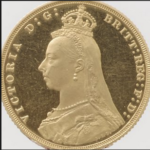A Trip to Diagon Alley (High Street)
Walking through the city centre of Oxford, it is difficult to ignore the abundance of small shops with merchandise of the University of Oxford in their windows. As befits a university town, the main attraction is precisely the aura of old objectified in the sublime works of architecture that imprint themselves into memory almost by accident. Although most buildings do not date from the time of the University’s inception, they all merge under the banner of ‚old‘ into an eternal past that is never fully absorbed by the more recent structures. This, together with the enchanting stories told on the many tours through the ‚historical‘ parts of town, makes clear that the tourists (among one has to count the students collecting the memorabilia of all the elite institutions they went to) are right: this is still the same university, preceeded by the same reputation and, by extension, the same town it was almost a thousand years ago. Elegantly navigating around the concrete blocks housing engineering or computer sciences, one can easily get the feeling that one travelled not only to England, but also to the middle ages (or, for that matter, to whichever time one prefers, as long as it is before the 20th century). Students hastily exiting their college dormitory, presumably because they are late to class, despite their attire being slightly different to days past (although, if one is a little lucky, some of them may be dressed in academic attire, just like in the times of… when exactly?), make clear that nothing here is set up for the tourist, or, rather: everything here is perfect for the tourist, because none of it is set up. From concrete buildings to the tour guide’s tales, Oxford is drenched in authenticity. Returning to the shops, it becomes obvious that no extra labour on the part of the shop owners is required to make clear that wearing a £20 jumper is to wear history. But not only the University merchandise cannot be ignored. Equally ubiquitous is the abundance of Harry Potter merchandise, more often than not in the same windows: Jumpers with „Oxford“ written above the University’s coat of arms next to jumpers with „Hogwarts“ written above the School’s coat of arms; college scarfs next to house scarfs. Indeed, it becomes difficult to distinguish them from one another. If one disregards plastic wands and life-size Dobby’s, one could get the impression that the University of Oxford and Hogwarts are really just the same institution. And one would not be completely wrong: in many respects, what Hogwarts is to fiction, Oxford is to reality. Not just the material continuity between the two (anecdotes every tour guide and every student playing tour guide for their parents and friends will know by heart) and the obvious inspiration the latter was for the former: both share the aura of old, the intricate architecture from a time when buildings were more than practical blocks, the prestige and the special qualities attributed to those select few that ‚make it‘. Resembling one another, it becomes impossible to determine which franchise’s objects inspired which. Is the college scarf modeled after the house scarf or the house scarf modeled after the college scarf? Indeed, through the juxtaposition of reality and fiction, Oxford lends Hogwarts its materiality and Hogwarts Oxford its magic. Just like Hogwarts comes (literally) tangible here, so is Oxford imagined through Hogwarts: formal dinners al- most necessarily evoke those glamorous scenes from the Philosopher’s Stone. Through mental images the origin of which cannot be clearly discerned, Oxford/Hogwarts is dragged into a mythical past in which fiction cannot be clearly separated from history. If for something to be authentic means to be (or: seem) pristine, untouched by commercialization or similar manipulations, like it has always been, than Oxford/Hogwarts is hyper-authentic through commercialization: because it is unconsciously fused with Hogwarts through mental images evoked by Harry Potter, that, however, seem to themselves be modeled on Oxford, and through the similar merchandise, that both create a situation in which one cannot discern which came first: the image of dinner in the great hall, or the college formal, the college or the house scarf; a situation that makes it so the dinner in the great hall and the house scarf suddenly seem real, because they are modeled on the formal and the college scarf, and equally makes the latter two magical, because something similar was attended by/worn by the boy who lived. The tourist enters a realm of hyperreality that is equally real and fictitious, and as if the whole town conspired with Harry Potter films and books, every street and every guide, every scene and every chapter work together to make him and her forget that regardless of whether one buys an Oxford or a Hogwarts jumper, they are mass-produced merchandise that have nothing in common with the middle ages or the world of magic except the name.
Contributed by NiklasHartmann on 07/02/2022






